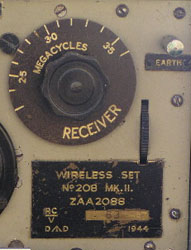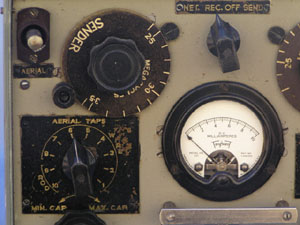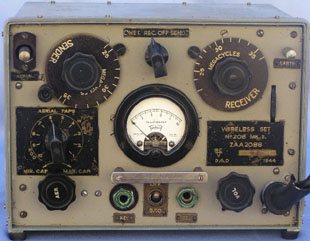Illustrations of the set



The set was designed as a low power portable equipment to provide C.W (Wireless Telegraphy) communication only within an infantry battalion or similar. The set was capable of being carried in a pack or ruck-sack for transport and was designed to be operated on the ground by one man.
The set is equipped with 6 valves, 4 for the receiver and 2 for the sender.
The frequency range indicates the set was designed for tropical jungle operation, with frequencies in this range still used for tropical broadcasting today.
A similar set, the 108 Mark 3, provides AM operation over the same frequency range. The earlier 108 Marks 1 and 2 with their higher frequency ranges, proved unsuitable under tropical jungle conditions, because of signal absorption.
Power Supply: The set was supplied with a separate battery box, comprising a l.5v heater (L.T.) supply and a 90 -105v battery block for H.T. supply. The L.T. current on sending is 200ma with key down and 250ma on receive. H.T. drain is l8ma on transmit and 8.5ma on receive.
The IF is 455 kHz


© Ian O'Toole, 2009. Page created: 28/04/03 Last updated: 11/12/2009